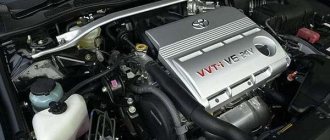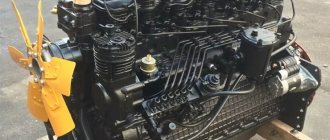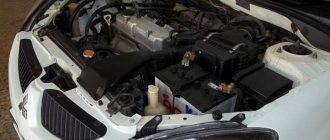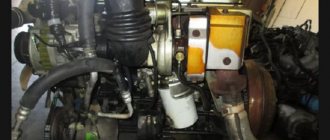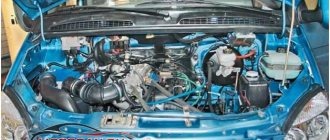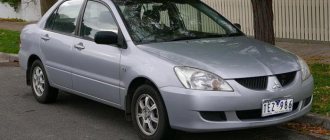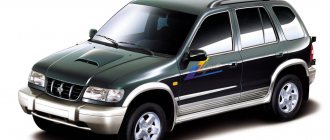Technical characteristics of the D-21 engine, price of new and used
The excellent technical characteristics of the D-21 engine make it indispensable in the public utilities sector, in agriculture and industry.
This is a non-compressor four-stroke diesel engine with an air cooling system, used in a number of special equipment, for example, in tractors, on self-propelled tractor chassis of small-sized forklifts, autonomous (mobile) compressor stations, diesel power plants, welding machines. The diesel engine has high torque over a wide speed range, which gives the car mobility.
Cylinder head
Each cylinder of the D 21 engine has an individual aluminum head, which houses the intake and exhaust valves, a decompressor hole and an injector.
The head and cylinder are secured with four studs screwed into the body of the block. The heads, like the cylinders, are interchangeable. For cooling, the head is equipped with eleven fins. In the upper part of the head there are guide bushings for the valves and studs for the axis of the rocker arms for the valve drive. Heat-resistant cast iron valve seats are pressed into the lower part.
Inside the head there are inlet and outlet channels that exit to the left side. The intake and exhaust manifolds are attached to these channels on studs.
Main characteristics of the motor
Diesel D-21 is environmentally friendly. The exhaust gases from diesel engines contain less carbon monoxide than gasoline engines. Diesel fuel is non-volatile, due to which the possibility of fire of the power plant is minimized, and in addition, such engines use an ignition system. The rotation speed in the motor is controlled by reducing the magnetic flux or increasing the voltage on the armature.
The characteristics are as follows:
- The d21a1 engine has power (based on horsepower) - from 1500 to 2000 rpm.
- Motor parameters: length - 689 mm, height - 865 mm, width - 628 mm.
- The weight of the diesel engine, based on the volume of the kit, is 272-295 kilograms.
- The engine has two cylinders with a diameter of 105 mm and a volume of 2.08 liters.
- The piston stroke of the engine is 120 mm with a compression ratio of 16 and a torque of 113/104/103 Nm.
- Specific diesel fuel consumption is 180/177/176 g/hp/hour. Lubricant volume - 7 liters. Lubricant loss due to waste is 0.3-0.5%.
- The crankshaft rotational speed at factory engine power is 1800 rpm. Rotational frequency of the crankshaft when idling: maximum - 1950 rpm, maximum stable - 800 rpm.
Basic systems and mechanisms
The method of forming the mixture in the engine is a combustion chamber with direct fuel injection. The crankshaft rotation frequency control mechanism is centrifugal with a fuel input corrector, independent of the mode. The engine has a closed type injector with a multi-jet nozzle. It is also equipped with fine and coarse filters, an oil inertial air purifier, and an engine hour meter.
The lubrication system is combinational and operates under pressure from the oil pump and by splashing. The engine has a natural cooling system using air. Thermal regulation of the motor is carried out using a throttle located at the outlet of cooled air from the fan device. The engine is started using a starter.
Specifications
The D 21 (D 120) engine is produced in three versions, which differ from each other in different power parameters (see table).
| OPTIONS | MEANING |
| Power, l. With. | 30 l. With. at 2000 rpm. |
| 25 l. With. at 1800 rpm. | |
| 21 l. With. at 1500 rpm. | |
| Number of cylinders | 2 |
| Cylinder volume, l | 2.08 |
| Cylinder diameter, mm | 105 |
| Piston stroke, mm | 120 |
| Compression | 16 |
| Torque (depending on horsepower), Nm | 113/104/103 |
| Diesel fuel supply system | Direct injection |
| Specific consumption of diesel fuel (depending on horsepower), g/hp.hour | 180/177/176 |
| Engine oil brand, summer/winter | M10G, M10V / M8G, M8V |
| Engine oil quantity, l | 7 |
| Loss of oil due to waste,% | 0,3…0,5 |
| Overall dimensions, mm | 689x628x865 |
| Weight, kg (depending on version) | 264…292 |
The engine is installed on tractors T-25, T-30, etc., self-propelled chassis T-16, small loaders, diesel power plants, autonomous (mobile) compressor and welding units.
Main advantages
The advantages of the engine are as follows:
- the presence of an air cooling system facilitates its installation, use and maintenance of the engine (there is no need to install a radiator device, expansion tank and other parts required with a liquid-based cooling system). In addition, the air cooling system makes it possible to use a diesel engine in any climate zone with a temperature range from +40C to -40C;
- a unique balancing system that dampens the electrical vibration observed in a 2-cylinder engine;
- small dimensions, fairly low engine weight;
- the specific loss of fuel is at the level of the best production samples;
- the best layout on the machine and ease of maintenance.
A homemade tractor with a D 21 engine and a used engine can also be purchased on Avito and other sites.
Source
Carter
The main part of the D 21 engine is a cast iron crankcase (the so-called crankcase), closed from below with a stamped oil pan. Inside the crankcase there are three crankshaft supports, as well as a pair of camshaft and balancer shaft supports. To increase rigidity, the axis of the crankshaft bearings is located above the lower plane of the block. Inside the block there are channels for supplying oil from the gear pump to the bearings.
Attached to the rear of the crankcase is a cast engine flywheel housing. At the front of the engine there are gears for driving the camshaft and auxiliary units. The gear block is closed with a removable cover. All main engine components are installed on the crankcase or casings of the front and rear parts of the engine.
On the left side of the engine (along the path of the tractor) there is a fuel supply pump and fuel supply pipelines to the pump and to the injectors in the cylinder heads. On the same side are the air intake and exhaust manifolds. On the intake manifold there is a glow plug used to heat the air. Additional heating is used to facilitate engine starting at low air temperatures.
On the front of the engine there is an oil filler neck, an air intake for the axial fan and an hour meter. The generator is located on the same axis as the fan. The entire assembly is secured with a clamp to the gear block cover. The drive is carried out using a belt drive from the crankshaft. On the shaft pulley there are marks of opposite dead centers in the first cylinder (indicated as TDC and BDC) and a mark for the start of fuel injection into the first cylinder (mark T). Also mounted on the front of the D 21 engine is an oil dipstick and a filter system for fuel purification.
A decompressor is installed on the right side of the engine to facilitate engine starting. This mechanism connects the cylinder cavity to the atmosphere and can be used to emergency stop the diesel engine. On the same side, fuel injection nozzles are installed in the cylinder heads. The cylinders are closed with a casing into which air is pumped for cooling. An electric starter is installed at the bottom of the engine, closer to the flywheel housing.
The history of modifications is more than half a century long
Initially, the engine power was 14.6 hp.
Given that at that time the weight of the special transport itself was 1780 kg, this was not enough to complete the assigned tasks. Starting with T - 25A, diesel power increased to 26.6 hp. It spun the flywheel up to 1800 rpm, which ensured movement and work with hydraulic attachments or trailed equipment.
New technical characteristics for the T-25 were provided by the D-21A model. Unlike the D-21, it was equipped with a distribution fuel pump of the ND-21/2 type.
The plunger made 2 times more strokes per revolution of the drive shaft. This made it possible to increase the power of the vehicle.
Today the D-21 is produced under the updated D-120 brand. As a result of modernization, the operating power of the engine increased to 30 hp.
But the main achievement of the new VMTZ model was not the improvement in power characteristics. This diesel engine uses a balancing mechanism of the original design for the first time.
It eliminated the long-standing “trouble” of two-cylinder engines – vibration of the engine and, as a consequence, of the tractor itself.
Specifications
Engine characteristics:
- type - four-stroke;
- number of cylinders - 2;
- cylinder arrangement is vertical;
- power - 25 hp / 18.4 kW;
- fuel consumption - 241 g/kWh / 177 g/hp/h;
- fuel - diesel;
- cooling - air, forced;
- relative oil consumption - from 0.3 to 0.5%.
The engine is installed on the T 25 tractor
Dimensions:
- length - 689 mm;
- width - 628 mm;
- height - 865 mm.
Weight - from 272 to 295 kg, depending on the configuration (without oil).
The engine is compressorless and equipped with direct fuel injection. The technical characteristics of the D 21 engine are thought out and balanced in such a way that the engine operates for a long time and without failure, and is also easy to diagnose and repair even in field conditions.
Tractor building? Where else is the T-25 Engine used?
Thanks to easy starting in 3-5 seconds from the starter and the ability to operate at temperatures from +40 º to -40 ºС, the modification of the basic design has been widely used.
At the same time, it complied with the standards for the content of harmful substances in exhaust gas emissions.
The diesel propulsion unit is used in small tractors T-25, T-25A, self-propelled chassis (T-16MG) and special road equipment. Also included are PUM-500 mini loaders, compressor stations and welding machines.
A large segment is occupied by units in various special equipment, where they are used as economical diesel generators.
Due to the consumption of diesel fuel (180 g per 1 horsepower/hour), compact motors are used in mobile AD-8-T400-1VP, ED-8-T400-1VP and stationary power plants with a power of up to 8 kW.
Prevention and repair of the power unit of the T-25 tractor
To reduce the need to repair the unit, maintain the performance of the diesel engine and increase its service life, regular maintenance is required.
This is inexpensive and is carried out using a primitive washing machine, a metal knitting needle and a wooden scraper:
- ETO is carried out every shift after 10 hours of operation, the level is checked and oil is added to the crankcase;
- TO-1 after 125 days of operation, cleaning the protective mesh of the fan and air cleaner;
- TO-2 and TO-3 after 500/1000 hours of operation at a maintenance point;
- seasonal service station 2 times a year before/at the end of the cold season, seasonal oil is added, the fan disk is removed, and the oil radiator for heating the tractor driver's cab is turned on.
Even reliable equipment breaks down, the diesel D-21A is no exception. The basis for contacting a repair shop/repair base and diagnosing important components of the power plant is:
- difficult starting of the power unit;
- reduction in engine power;
- black (gray) smoky exhaust;
- gradual decrease in traction capabilities;
- metallic or dull sounds in the area of the connecting rod and piston group;
- the diesel engine is peddling (a sharp increase in crankshaft speed);
- interruptions in the operation of D-21A.
Most of the D-21/D-120 malfunctions have been known to operators for a long time. They are easily identified by characteristic external manifestations without the use of diagnostic equipment.
Existing analogues and competitors of the domestic “classic” T-25
The produced original designs T30-69, TZO-7O, TZOA-80 and T45 use modifications of the base model T-25. Competition for the Russian T-25 in the small special equipment segment comes from the Chinese Xingtai-224 minitractor with a 22-horsepower unit and the Mahindra Fengshou FS 240.
The latter has a three-cylinder engine with a power of 24 hp. Both models lag behind the domestic “classics” in terms of fuel consumption per unit of power.
Factory models are inferior in originality to the developments of “home craftsmen”. In “handicraft” conditions, a homemade tractor with a T-25 engine is produced. A homemade mini-tractor with a UD-25 engine is also popular.


